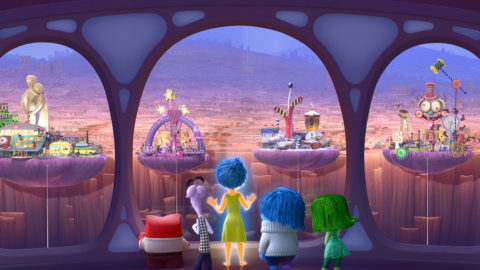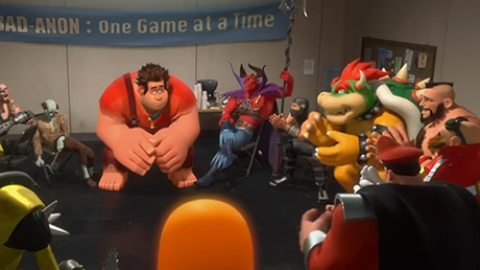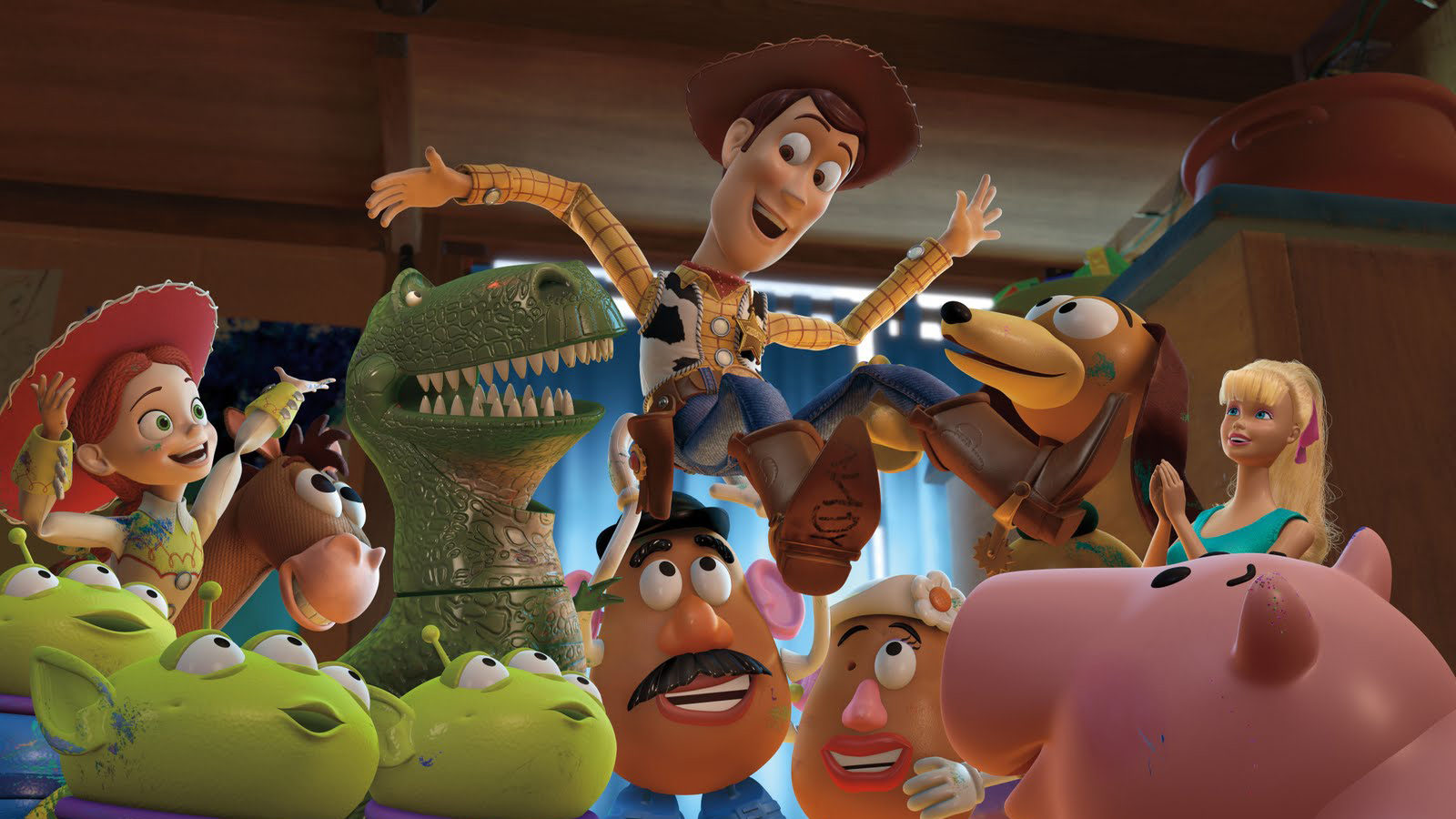
Passion Project
Steve Jobs may have transformed a bunch of industries, but his great skill wasn’t really inventing. Instead, he was the world’s greatest makeover wizard. He’d look at some industry, identify what had been wrong with it for years, and then figure out how to make it beautiful and simple and joyous.
—David Pogue, The New York Times, November 30, 2011

Eulogies for Steve Jobs since his death in October have hardly been few in number or sparing in their praise. But this quote best captures what he and his associates at Pixar did for the motion picture business by revitalizing what had become its moribund animation sector. Most of the attention has focused on the amazing story of how Jobs transformed Apple following his return to the company he founded in 1997 after an involuntary 10-year hiatus. The Pixar story, and its unprecedented string of 12 creative and commercial successes (yes, I am including 2011’s Cars 2, most critics notwithstanding) should be in large measure credited to the genius of Ed Catmull, John Lasseter, and the teams they assembled. But the vision and business model they followed was unquestionably one set by Jobs.
He saw how utterly dysfunctional the movie-industry culture had become in the corporate era. In the 80-plus years since the advent of the talkies, movie business mavens have developed certain inviolate rules, and these ancient shibboleths about how it should function continued to hold sway decades past their sell-by date: “If half your releases make money, you’re a genius.” “Stars are what bring people into theaters.” “A film company, to succeed, must be its own distributor, preferably worldwide, but at least domestically.” “Building a studio from scratch requires huge amounts of capital.” “Without a library to throw off cash, a film company can never be profitable.” And last, that oft-quoted William Goldman line that has excused decades of studio-executive profligacy and error: “No one knows anything.”
Well, Pixar clearly knew something. And what Jobs knew was that the entire way the movie business functioned had to be rethought amid the problems that beset the industry by the mid-Nineties—soaring production costs, absurd salary demands from a shrinking pool of genuine stars, and a seemingly insatiable need for ever-greater spending on publicity and advertising in order to herd audiences into the local megaplex. While these pressures were all conspiring to reduce industry profit margins, Jobs saw that there was a far more existential problem: “creative” executives at the studios were picking movies based on cynical calculations about “the market,” and not films for which they had even the slightest passion.
It was, I am fairly certain, Jobs’s innate iconoclasm that led him to see that each of these truisms simply weren’t true. The entire capital base of Pixar was $140 million from its IPO, about the cost of a standard big-budget Hollywood film these days. In striking comparison, DreamWorks SKG (for Spielberg, Katzenberg, and Geffen) was launched with over $1 billion in capital—just as Pixar was releasing Toy Story. In true Hollywood fashion, the original DreamWorks has yet to turn a profit for its shareholders—except for its gold-dust trio of founders—while the shares of its spun-off Animation division currently trade 40 percent below their 2004 offering price.
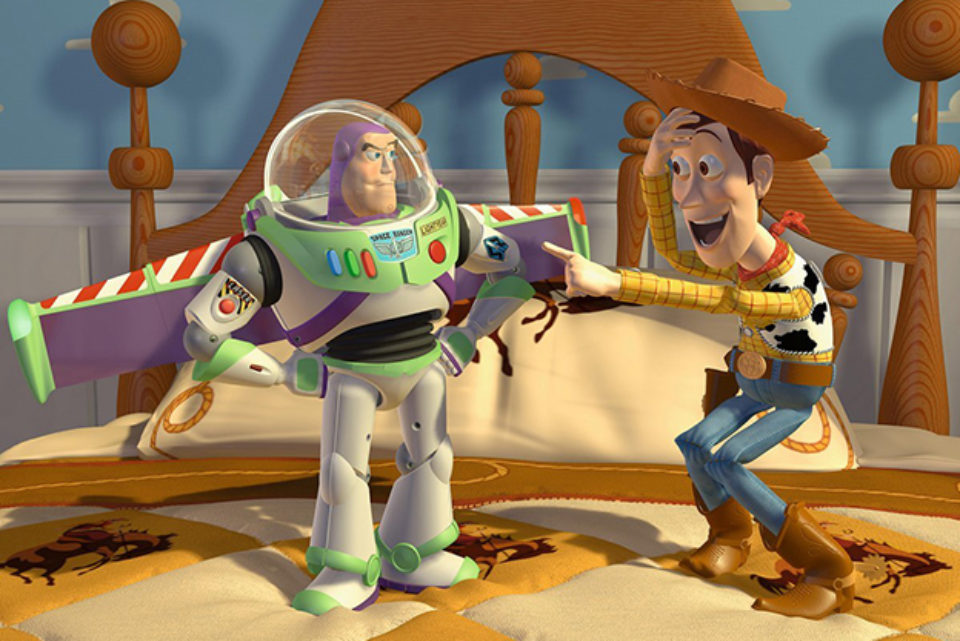
Toy Story 1
As for stars, the story and the CGI animation were always going to be the main draws of a Pixar movie. Getting Tom Hanks to voice Woody may not have been easy, but it wasn’t about money. The stars who voice the characters may be big names, yet they gladly do this work for a tiny fraction of what they would command for a live-action film. (I am reliably informed that Pixar—and Disney—still pay their voice talent, including major stars, what Hollywood considers a measly $10,000 a day for session work.)
The P&A spend to launch a Pixar film, while still substantial, remains well below the industry average for films with comparable grosses, due in part to the brand identity Pixar has created. As for the initial decision to use the Disney distribution organization, that must have struck Jobs as a no-brainer. He could hardly afford to replicate their worldwide system, nor would doing so necessarily result in an improvement over Disney’s. More important, Jobs was determined that all of Pixar’s time, talent, and money would be spent on the creative elements.
The company’s location in Northern California did not merely remove it physically from Hollywood. Jobs and his associates created at Pixar a true Silicon Valley culture, with a unique combination of internally generated technology, creative freedom, a true understanding of the nature of entertainment, and an invincible belief in themselves. They returned the movie industry to its roots as a combination of art and craft, eschewing the slick corporate style of the modern studios.
Pixar’s origins lie in the Lucasfilm’s special effects computer group, which Jobs purchased in 1986 for $10 million. (While that money came from an injudicious sale of his founder’s stock in Apple, he would ultimately turn this sum into $5 billion worth of Disney shares when it acquired Pixar in 2006 for $7.4 billion. Due to that sale, his Disney ownership ended up dwarfing his ultimate $2.1 billion holding in Apple.) This small operation, initially focused on computer programs for TV commercial production, came with two extraordinary assets: Lasseter and Catmull.

Finding Nemo
Jobs clearly recognized that computer-generated imaging would transform what was still in the early Nineties a totally Disney-dominated—and sleepy—field of hand-drawn animation into a newly dynamic sector of the film business. Under Katzenberg’s direction, Disney’s classic animation had experienced a resurgence, with hits like The Little Mermaid, Beauty and the Beast, Aladdin, The Lion King, and Pocahontas arriving almost annually. But with the appearance of Toy Story in 1995, it was clear that CGI had changed the nature of animation’s appeal, broadening the audience for the genre with a sophistication that was both visual and thematic.
I doubt that Jobs knew just how explosive the growth of animation would prove to be. From 1989 to 1993, the genre had accounted for less than three percent of the domestic box office, and 90 percent of that total was Disney. Thanks to Pixar’s lead, with DreamWorks Animation following in its wake, animation accounted for nearly 15 percent of total U.S. and Canadian box office from 2007 to the end of November of 2011.
And while Disney, due to its acquisition of Pixar, remains the dominant force in animation, the industry’s output is now nearly all CGI, the most recent exception being Disney’s fairly successful 2009 release The Princess and the Frog. But over the past two years, each of the U.S. heavy hitters has put out at least one major animated film, while DreamWorks Animation releases only 3-D CGI films, at the rate of two a year.
A few numbers: on average, Pixar’s 12 productions have raked in $250 million at the domestic box office and $375 million outside North America. But perhaps more important, thanks to the upsurge in demand for DVDs that coincided with the first 10 years of Pixar’s life releasing films—a trend that has been abating these past five years—Pixar titles have generated an average of $500 million in worldwide home video revenue, most of which is profit. Finding Nemo holds the current sales record, with over 50 million home video copies sold around the world, a record that may well stand for a very long time. To get a sense of just how amazing these results are, note that these figures are more than double the box-office totals generated by Disney’s last five animated non-Pixar releases. (Okay, I cheated a little: the five titles include this year’s execrable Mars Needs Moms.)
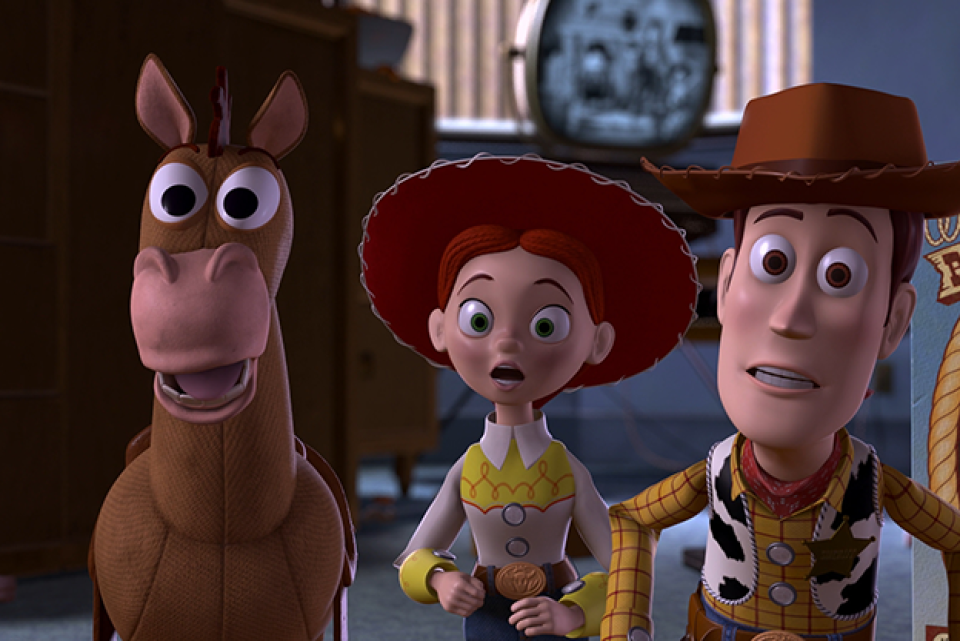
Toy Story 2
Devotees of cinema may be forgiven for not knowing—or even not caring—about the extraordinary financial results achieved by Pixar films. But I believe that Pixar’s success has a larger message for the rest of the film industry: make something you truly believe in, and it just might deliver those outsized profits your average Hollywood honcho can only dream of.
What makes this achievement all the more notable is that it was brought off in the shadow of the only other company to have managed such an accomplishment: Pixar’s quondam distributor partner and now parent, Disney. During the glory days of Walt, the Disney name on a picture assured audiences of far more than just family-friendly entertainment. Groundbreaking animation, compelling storytelling, memorable scores, and indelible characters were the reasons why the Disney classics alone (save Gone with the Wind) were able to be perennially re-released in theaters, long before the age of home video rendered such strategies obsolete. (Of course, sales of DVDs—and soon digital downloads—to successive generations of children will be, for Pixar films, the equivalent of theatrical re-releases in Walt’s era.)
Unquestionably, Pixar’s output has brought that same combination of qualities from Walt’s days of hand-drawn animation into today’s world of digital 3-D. It too enjoys that nearly unique attribute in the film business: a brand that resonates with moviegoers. I will leave to others the task of assessing the collective creative impact of Pixar on the art of moviemaking. But I believe that the company’s amazing fiscal success is the direct—indeed, almost inevitable—outgrowth of its passion for making movies, and only those it truly believes in. Every aspect of the creative process advances the original vision. Modern movie studios don’t make movies, they make deals. Pixar makes movies.
Just how much of Pixar’s success can be attributed to Steve Jobs may be open to conjecture. The company may well have benefited from his more intense focus these past years on Apple, while being spared the kind of micromanaging that some call genius and others obsessive-compulsive. But there is no question that he saw the opportunity, he assembled the team, he laid out the broad strategy, and, perhaps most important of all, he gave the people at Pixar true creative freedom. The result? He gave us all something that was “beautiful and simple and joyous.”




